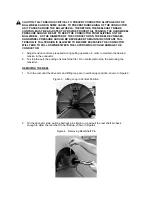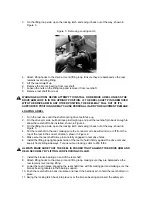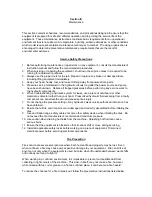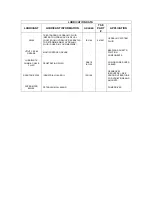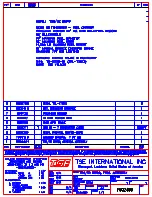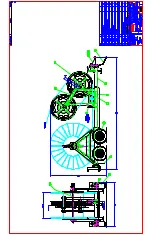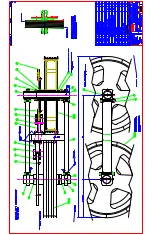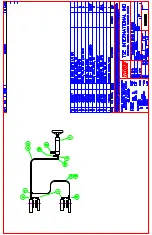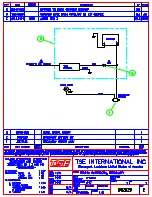
Section III
Maintenance
This section contains schedules, recommendations, and procedures designed to ensure that the
equipment is prepared for safe and efficient operation and to prolong the service life of the
equipment. These maintenance instructions constitute basic requirements for an operational
environment that is not extreme in temperature, humidity, airborne abrasives, or other conditions
which would require preventative maintenance techniques to combat. The using organization is
encouraged to determine preventative maintenance requirements that are the result of
environmental extremes.
Service Safety Precautions
1.
Before performing maintenance or repair work on any equipment, consult the manufacturer’s
instruction manual and follow the recommended procedures.
2.
When servicing or repairing the equipment, shut down the engine unless it is required to be
running for adjustment purposes.
3.
Always use the proper tools for the job. Repair or replace any broken or damaged tools,
including lifting equipment immediately.
4.
Keep your head, hands, feet, and loose clothing away from power-driven parts.
5.
Pressure can be maintained in the hydraulic circuits long after the power source and pump
have been shut down. Relieve all trapped pressures before performing any service work to
the hydraulic components.
6.
When troubleshooting a hydraulic system for leaks, use a piece of cardboard or other
material as detector rather than your hand. Pressurized hydraulic fluid escaping from a faulty
component can penetrate the skin and cause serious injury.
7.
Do not change the pressure setting of any hydraulic valves unless authorized instruction has
been obtained.
8.
Ensure that all tire and rim parts are undamaged and correctly assembled before inflating the
tires.
9.
Use an inflation cage, safety cables or some other safety device when inflating the tires. Do
not exceed the tire manufacturer’s recommended maximum pressure
10. Use caution when draining hot fluids from the machine. Splashing hot fluid can cause
serious burns.
11. Ensure that the equipment is blocked so that it cannot shift or move during servicing.
12. Install all applicable safety locks before working on a piece of equipment. Disconnect
electrical power before servicing electrical components.
Fire Prevention
Fires can create severe emergencies where both human life and property may be lost. Even
when confined, a fire may cause very expensive damage to your equipment. Fire can strike at
anytime, not only when the equipment is used, but also when lift unattended between work shifts
and nobody is around to fight it.
When working in a confined environment, it is impossible to prevent combustible dust from
collecting in tight corners of the machine. This dust, in itself, may not cause a fire, however,
when mixed with fuel, oil or grease in a hot an confined place, it can become a fire hazard.
To reduce the chances for a fire to break out, follow the preventative instructions listed below:
Summary of Contents for T50 BWRC
Page 11: ......
Page 12: ......
Page 24: ......
Page 25: ......
Page 26: ......
Page 27: ......
Page 28: ......
Page 29: ......
Page 30: ......
Page 31: ......
Page 32: ......
Page 33: ......
Page 34: ......
Page 35: ......
Page 36: ......
Page 37: ......
Page 38: ......
Page 43: ...www dexteraxle com OPERATION MAINTENANCE SERVICE MANUAL 600 8 000 lb Axles Related Components ...
Page 125: ...Service Record Date Service Performed Mileage ...
Page 126: ...Service Record Date Service Performed Mileage ...
Page 127: ...Service Record Date Service Performed Mileage ...












